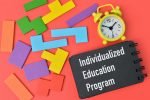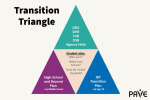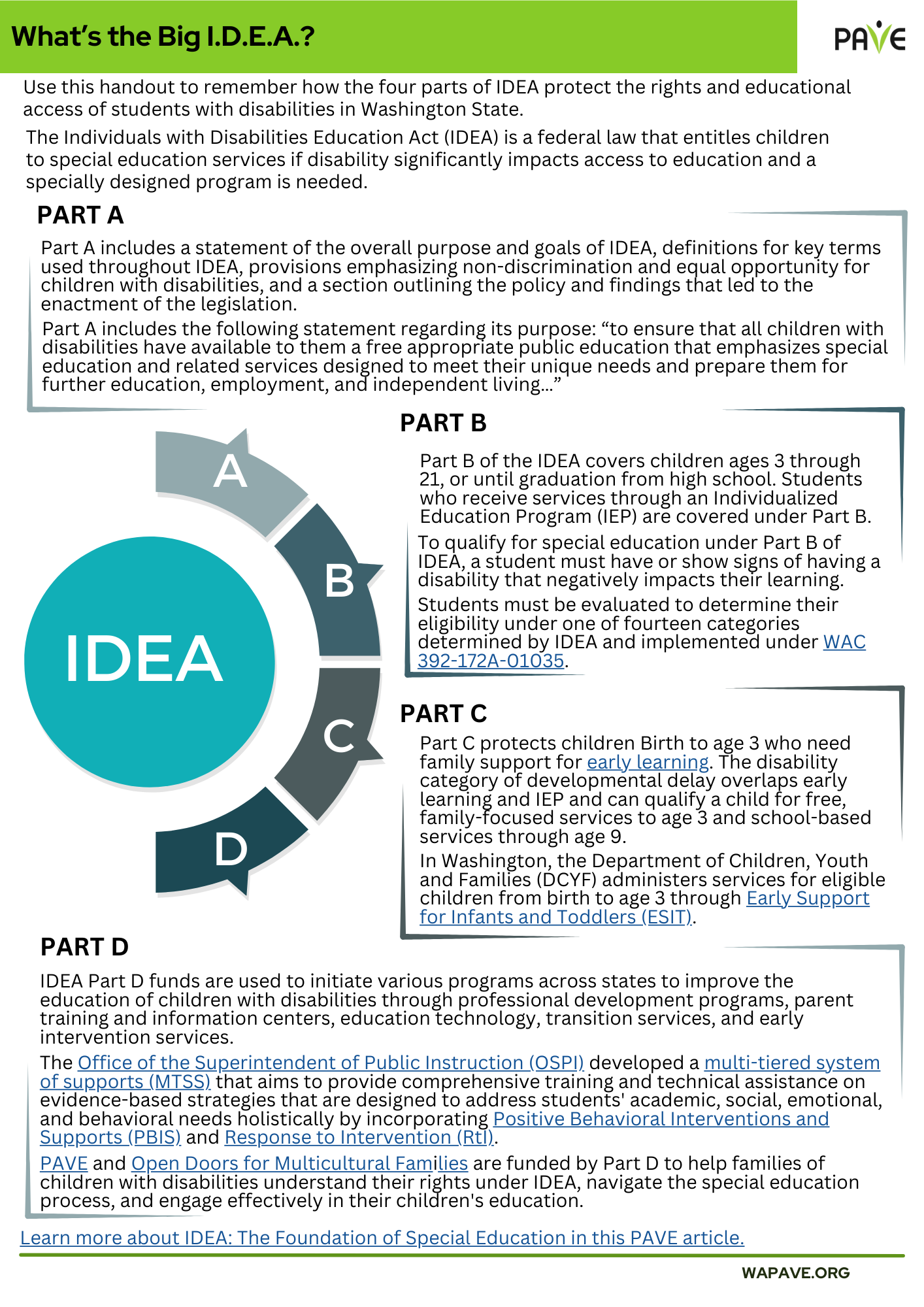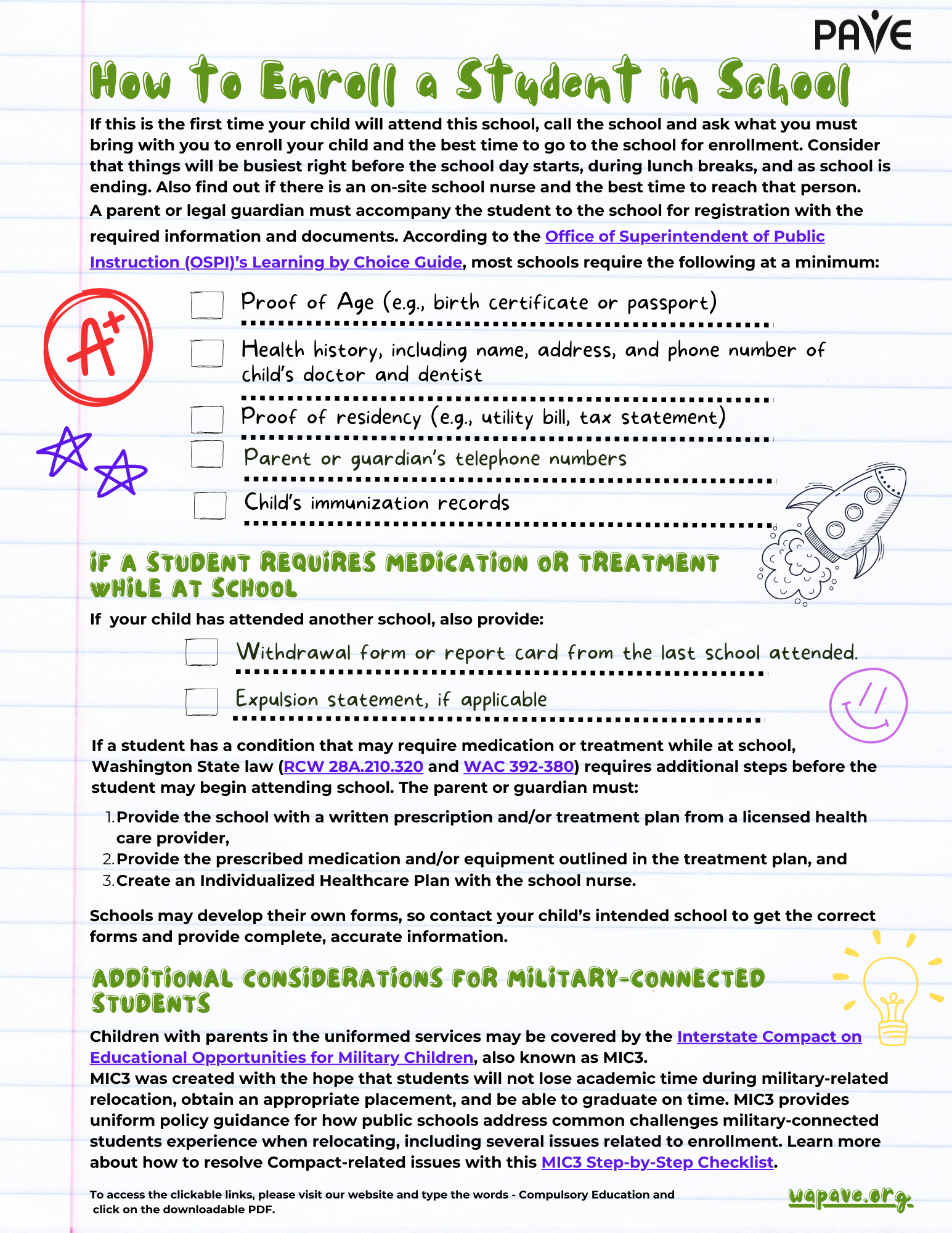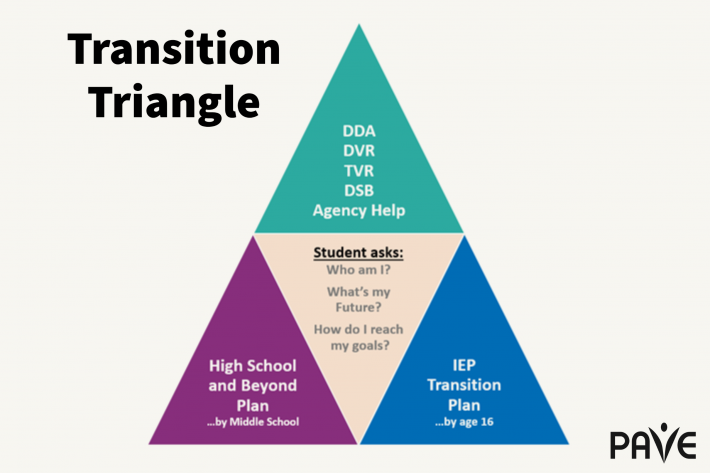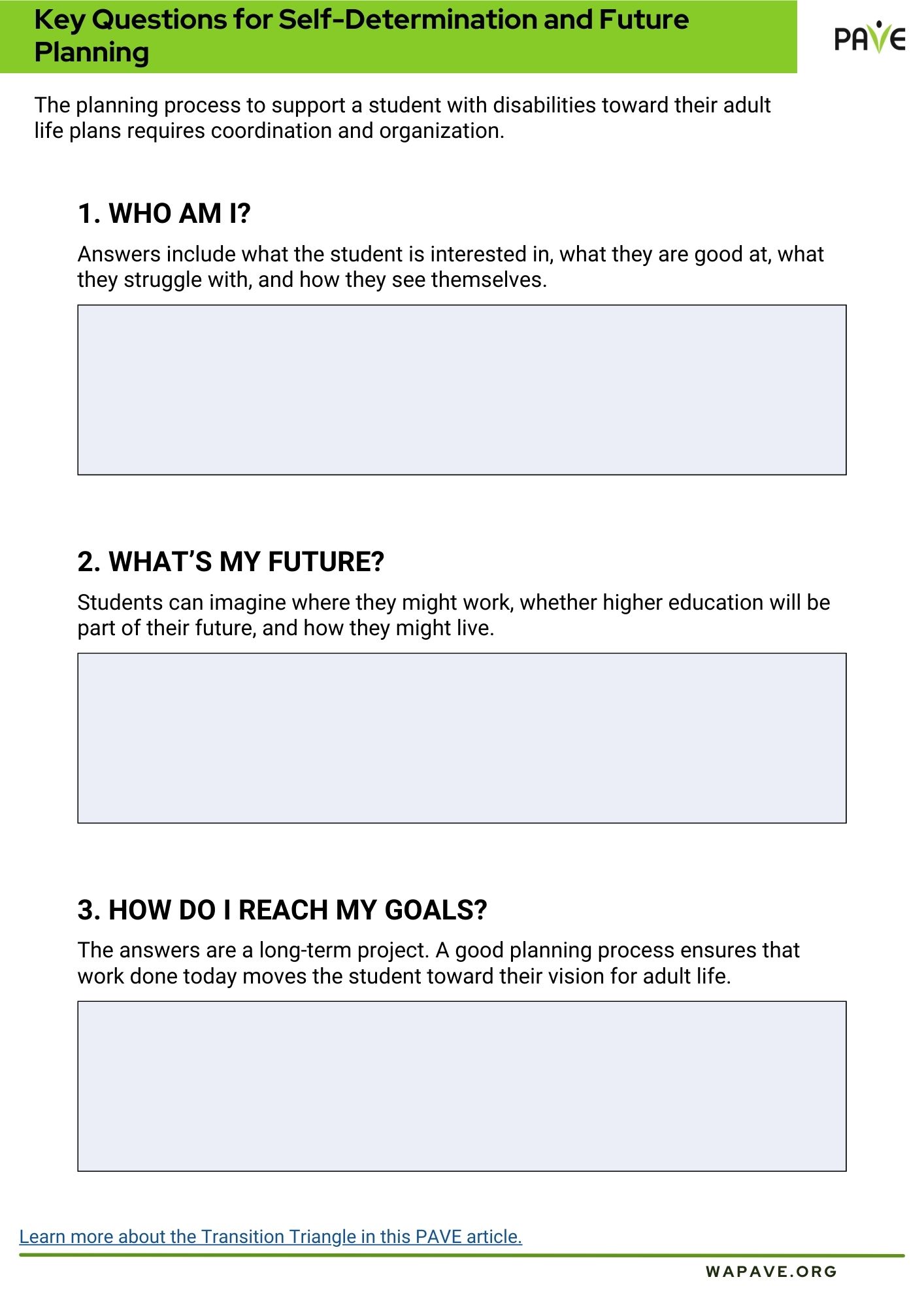A Brief Overview
Full Article
Summer provides an opportunity to reset for the school year ahead. If your child has a disability, you may want to think about what went well or what could have gone better last year. By getting organized, you can plan for fall and beyond. This article includes resources and information to help you get ready for a new school year.
The Back to School Checklist from PAVE includes a downloadable picture view (infographic) of essential tasks.
Locate and organize documents
Now is a good time to re-read important documents, such as your student’s Individualized Education Program (IEP), Section 504 Plan, or Behavior Intervention Plan (BIP). Organize a place to store the most current copies. Whether you choose an electronic file or a physical folder, label everything with the school year and renewal dates so you can easily notice when something is due for an update.
PAVE provides an article to help: Steps to Read, Understand, and Develop an Initial IEP.
Do you have concerns about anything that’s included or missing from your student’s program or plan? Write down your concerns and plan to use these notes to organize your top priorities. When you have an organized list of your top concerns, save this list to share with the school so these points will be included in your next meeting’s agenda.
Here are questions to think about as you review your child’s IEP, 504 Plan, or BIP
- Do the Present Levels of Performance describe your child in current and accurate ways? If not, you may want to request a new evaluation. PAVE provides a Sample Letter and information to help families seeking an evaluation.
- If your child has a 504 Plan but has never been formally evaluated, consider requesting a formal special education evaluation to make well-informed decisions about service needs. The state’s Office of Superintendent of Public Instruction (OSPI) offers family-friendly guidance, downloadable in multiple languages, about Section 504 protections, plan development, and civil rights complaint options.
- Do IEP goals sound SMART (Specific, Measurable, Achievable, Relevant, and Time appropriate), based on the annual renewal date listed on the IEP’s cover page? PAVE has an article to help families participate in goal-setting and progress monitoring.
- Does the Adverse Impact Statement list all the major ways that the student’s disability affects how they do in school? If not, does that important statement need to be rewritten? Is there enough evaluation information to write an accurate statement? If not, additional evaluations may be needed.
- Make sure the highlighted needs and the services match! Each area of need mentioned in the Adverse Impact Statement must have a service or accommodation that applies to the area of need. Services and accommodations can apply to multiple areas of need.
- Is the IEP clearly written to show what skills the student is working on to support progress? For example, if a reading disability makes it hard for the student to keep up with their grade-level reading, does the IEP clearly describe the services and goal setting/progress monitoring to make sure the student is getting better at reading?
- Will each accommodation or modification work in real time to make sure the student has the support they need to use the classroom and curriculum?
Keep in mind that accommodations and modifications are intended to meet the needs of each specific student in an individualized way. Cut-and-paste, generic accommodations are not best practice. The state’s Office of Superintendent of Public Instruction (OSPI) has model forms for Section 504 Plans and IEP with Secondary Transition and IEP without Secondary Transition. If the accommodations need work, make notes and plan to request a meeting.
- If there is a Behavior Intervention Plan (BIP), take a careful look at the target behaviors and replacement behaviors to decide whether you agree that the plan is built to support the student’s learning and skill-building. PAVE has a video to help: Behavior and School: How to Participate in the FBA/BIP Process.
- Think about how behavior is going this summer and any insights you may wish to share. PAVE provides an article with Tips to Help Parents Reinforce Positive Behaviors at Home.
- You can ask for an IEP or 504 plan meeting anytime you have concerns. During summer you may be able to meet with district staff even if school staff are unavailable. The state’s Office of Superintendent of Public Instruction (OSPI) provides a Special Education Staff directory including local, regional and state level staff.
- Many parents want to meet with teachers and other school staff a few weeks into a new school year to see how things are going and make sure services are on track to support good outcomes. Plan to schedule your meeting as soon as school staff are back in the building for the best chance to get a day/time that works well for you and the rest of the team.
- Keep in mind that the school is required to support your participation in your student’s special education services program development and implementation. PAVE provides an article about the parent participation requirements of special education process.
Mark your calendar with important dates
IEP Annual Renewal date (usually on the cover sheet of the IEP).
The IEP team, including you, needs to meet before that date to review the IEP and make any necessary changes. Mark the renewal date on your calendar and set yourself a reminder to schedule an IEP team meeting about a month before that.
If something happens and you cannot meet before the deadline, keep in mind that your participation is a higher priority than the deadline. Your student’s IEP will not “lapse” or “expire” because of a meeting delay. That deadline is there to hold the school accountable, not to punish families if they need to delay a meeting.
Keep in Mind: If you want an additional meeting, set a calendar reminder to contact the district and as soon as soon as teachers are back at work to get your meeting on everyone’s calendar.
Is a new evaluation due?
A new evaluation is required every three years to guarantee ongoing eligibility and to make sure that services meet current needs. Note those dates on your calendar.
You can ask for a new evaluation anytime you have concerns about an unmet need that isn’t fully documented or understood. You also have the right to request an Independent Educational Evaluation (IEE) from a provider outside the school district if you don’t agree with the school’s evaluation.
PAVE has more information and a sample letter for requesting an IEE. As you review your student’s documents, think about whether asking for an evaluation is part of what you want to do. Evaluation requests must always be in writing, and schools are responsible for providing forms to support written requests.
Parent Conferences and other important school dates:
Review the school’s calendar and make notes of parent conferences and other important dates.
If your student will be a graduating senior, plan for senior year activities and make sure to allow plenty of time to request any accommodations. You may want to begin this process in early January.
More information to support families of transition-age youth is available from PAVE: School to Adulthood: Transition Planning Toolkit for High School, Life, and Work.
Behavior Intervention Plan (BIP)
A Behavior Intervention Plan (BIP) often needs to be rewritten in a new school year because of changes in staffing and environment. You may want to ask for a fresh Functional Behavioral Assessment (FBA) early in the new school year to make sure your child gets a fresh start on the year with supports designed to match current needs.
See PAVE’s training video: Behavior and School: How to Participate in the FBA/BIP Process. Mark your calendar to send a FBA request letter right away if that is something you want to happen when schools reopen in the fall.
If your child has experienced discipline and/or isolation and restraint in previous school years, summer is a good time to review state and district policies about discipline. PAVE provides an article: What Parents Need to Know when Disability Impacts Behavior and Discipline at School.
Ask for a copy of the district’s student handbook so you clearly understand expected student behavior and what might be grounds for a suspension or expulsion. Review the rules with your child and do your best to check that they understand.
If there are rules you don’t think your child will be able to understand or follow, plan to discuss those challenges with school staff.
Keep in mind that if your student is sent home from school because of behavior, they are being suspended. The school is required to file paperwork with the state and share that paperwork with you. PAVE provides an on-demand training: Discipline and Disability Rights: What to do if Your Child is Being Sent Home.
Make notes about summer regression to talk about ESY for next year
If you notice your child’s emerging skills are lagging during summer vacation, write down what you observe. When school starts again, pay attention to how quickly or if those skills return. This information is important for a discussion with the school about Extended School Year (ESY), which is a special education service provided outside of regular school hours for eligible students. See PAVE’s article for more information: ESY Helps Students Who Struggle to Maintain Skills and Access FAPE.
Is your child with disabilities included with non-disabled peers? How they are included is important to know
Special education laws require education in the Least Restrictive Environment (LRE) to the maximum (largest) extent appropriate to meet the needs of each student. LRE requires that students with disabilities get the supplementary aids and supports they need so their inclusion is equitable.
Keep in mind: equity doesn’t mean equal. It means people get the support they need to have the same opportunities.
Parents can support their child’s inclusion by thinking about how services might be given in the general education setting. If you think your child’s inclusion can be improved, bring specific ideas into an IEP meeting. Here are some resources you can review to prepare for those discussions with the school:
Write an informal letter to your student’s teachers
Before the new school year gets going, think about what you most want your child’s teachers to understand or remember.
- Is there something you say at home to help your child stay calm or refocus?
- Is there a behavioral intervention that’s working well this summer?
- Is there something unique about your child that isn’t obvious until you get to know them better?
- What do you most want to share to help teachers understand and support your child?
- Are there important points in the IEP, 504 Plan, or Behavior Intervention Plan that you want to call attention to?
All these points can be included in a short letter or email you share with teachers at the start of the school year. If you’re not comfortable writing, consider making a short video to share.
Keep in Mind. For a quick guide to keep your back-to-school planning on track,The Back to School Checklist from PAVE includes a downloadable picture view (infographic) of essential tasks.
Enjoy time with your children
Summer can fly by, especially in the Northwest. Getting ready for fall is important, but so is enjoying the sunshine, swimming pools, hiking trails, camping, games, or whatever makes summer special for your family. Relish time to do something that everyone enjoys and notice how you feel. If something feels challenging next year, you can tap back into the feelings you found during a special summer moment to remember what can go well. Teachers want to know those highlights too!
PAVE has an article, with links to self-care videos: Self-Care is Critical for Caregivers with Unique Challenges.
PAVE works all year and is happy to help. If you click Get Help and fill out a request for individualized assistance, we will contact you by phone and/or email and schedule time to discuss your specific questions.
Resources
Here are on demand training videos and articles from PAVE to help parents understand special education rights, the special education process, and family involvement.





